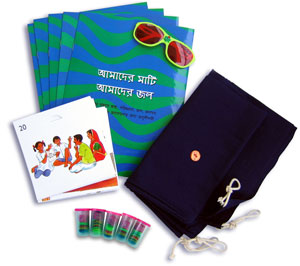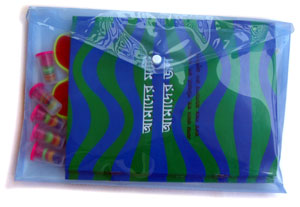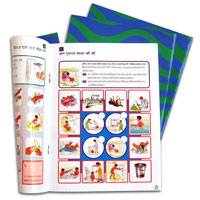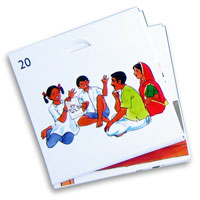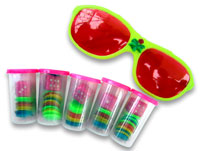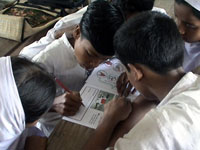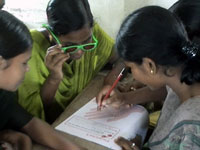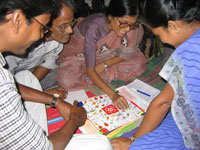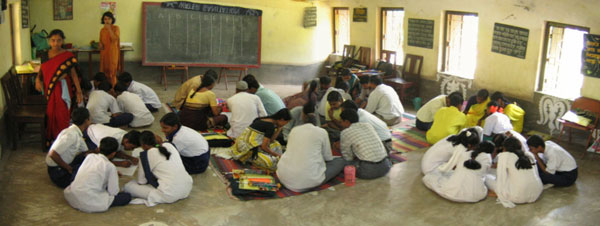As of 2005, the Watsan Education Kit is being used in
projects run by Water
For People in South 24 Parganas and Midnapur districts
of West Bengal, India.
The WFP project is aimed at providing well designed toilets
and wash stations to schools and communities.
NGO partners in these districts are working through more
than 30 local schools, training themselves and the teachers in the participatory
methodology.
One of the partners is involved with women's self help
groups in Sagar, a remote island near the Sunderban region.
The kit was tested in a rural schools with students
of different age groups. Later, teachers and peer educators were trained
in the methodology in one platform |
